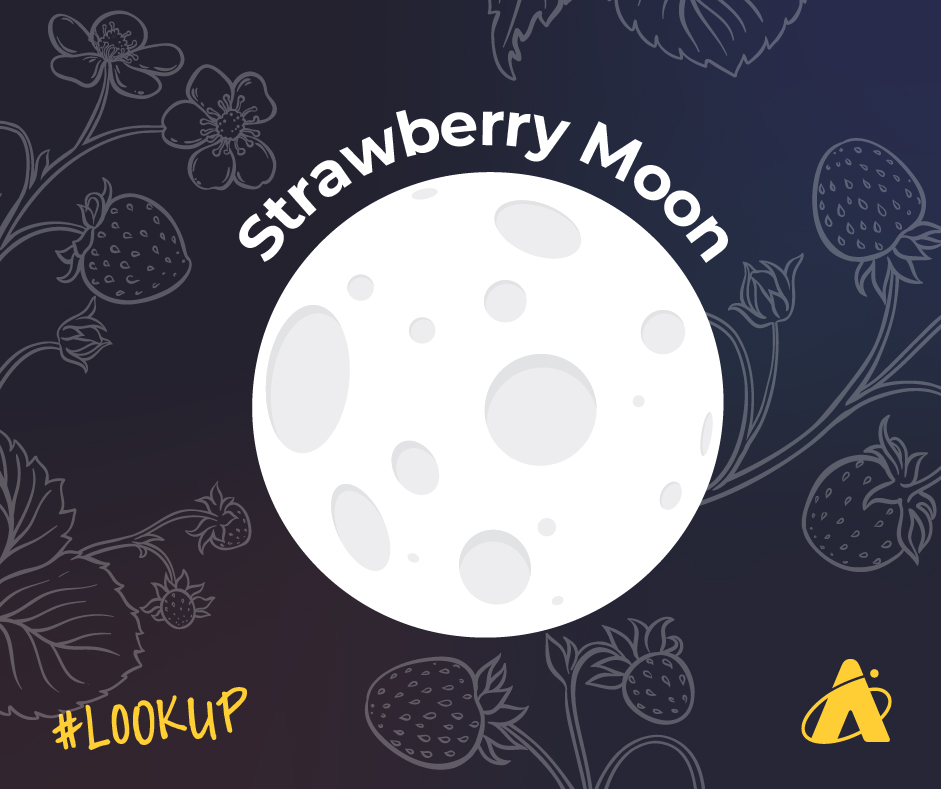Adler Skywatch: June 2020

This year’s summer solstice occurs on the 20th, at 4:44 p.m. Central Daylight Time. On that date the Sun rises just before 5:15 a.m. and doesn’t set until shortly after 8:30 p.m. Between those times, the Sun gets very high in the sky. Keep in mind this takes place in the Northern Hemisphere; those in the Southern Hemisphere are experiencing the winter solstice and thus receive the least amount of sunlight on this date.
Shortly after the Sun (finally) sets, the only planet visible to the unaided eye is Mercury — but only for the first half of the month, very close to the west-northwest horizon. Four bright stars form an arch over Mercury: Procyon, in the constellation Canis Minor, to the left; Capella, in Auriga, to the right; and the “twin stars” Pollux and Castor, in Gemini, above it. Look for Mercury earlier in the month, because it gets dimmer with each passing evening. After the 13th, Mercury is so dim and so close to the Sun it’s practically impossible to see.
As was the case the past few months, the planets Jupiter, Saturn, and Mars rise in the southeast around the midnight hours. Jupiter and Saturn rise an hour or two before midnight; and Mars rises about an hour after midnight. Jupiter is the brightest of the three and thus can be used to find the other two planets. Saturn is only a few degrees to Jupiter’s left, and Mars is about 45 degrees further left. The morning of the 8th, a waning gibbous Moon is to the right of Jupiter. The next morning, the 9th, the Moon appears just below Saturn. And, the mornings of the 12th and 13th, the Moon is just below Mars. By morning twilight, the planets are low in the southern sky.
Just for the record, this month there is also one more planet in the sky not far from Jupiter. It’s the dwarf planet Pluto — and it’s way too dim to be seen without a powerful telescope.
The planet Venus, which was so bright in the evening skies for many months, is in the glare of dawn the first half of this month and won’t be readily visible until the last ten days of June. Look for it during morning twilight very low in the east-northeast sky, starting around the 19th.
There is a solar eclipse on the 21st of this month. However, it’s not visible in the Chicago area, or in most of the western hemisphere for that matter. Also, it’s an annular eclipse, which doesn’t produce the beautiful filmy corona around the Sun that a total solar eclipse does. An annular eclipse occurs when the Moon covers the Sun’s center but not the entire solar disc, which results in a thin ring (or annulus) of sunlight around the Moon’s silhouette. An annular eclipse — or the Sun anytime except during a total solar eclipse — should never be viewed without a proper solar filter. Permanent eye damage could result. The partial and annular eclipse will be visible across parts of southern Europe, much of Africa, the Middle East, Asia, and the western Pacific. For timings of this eclipse, websites such as TimeandDate.com are very helpful.
Full Moon: June 5th
Last Quarter Moon: June 13th
New Moon: June 21st
First Quarter Moon: June 28th
Please note that these descriptions are for the Chicago area, using Central time.
Want to see more of what is in our shared night sky? Our new YouTube series, Skywatch Weekly, shows you what to look for in the night sky using space visualizations, just like the ones we use in the domed theaters at our planetarium.






